Tick & Talk with Mario Jutronić: The man behind Marnaut, Croatia’s first dive watch
- Antonio Ljubic
- Jul 23
- 9 min read
Updated: Jul 25

In a world saturated with hommage timepieces and borrowed designs, Marnaut stands out like a sun-bleached sea urchin on the Adriatic seabed: organic, intricate, and entirely its own. At the heart of this boutique watch brand is Mario Jutronić, a man whose journey has been anything but conventional. Born in Split, Mario spent decades abroad, living in Japan, Hong Kong, and the United States, before returning to Croatia with a dream: to create a watch brand that would reflect both his love for vintage timepieces and his Mediterranean roots.
The result was Marnaut: Croatia’s first dedicated dive watch brand. Known for its sculptural dials inspired by sea urchins, cases that nod to vintage divers of the 60s and 70s, and a design philosophy driven by heritage over hype, Marnaut has quietly built a cult following among watch lovers who seek authenticity. From the signature Dark Surge 300 with its 300m water resistance and ceramic bezel, to the elegant Safe Harbour 100 inspired by Grand Seiko cases, each Marnaut model tells a story. Every detail, from the use of Swiss Sellita movements to the handcrafted suede straps from a third-generation German workshop, is chosen with purpose.
We sat down with Mario in his showroom at Nikole Tomašića 3 in Zagreb to talk about these special timepieces and the story behind them. Here's what we found out.
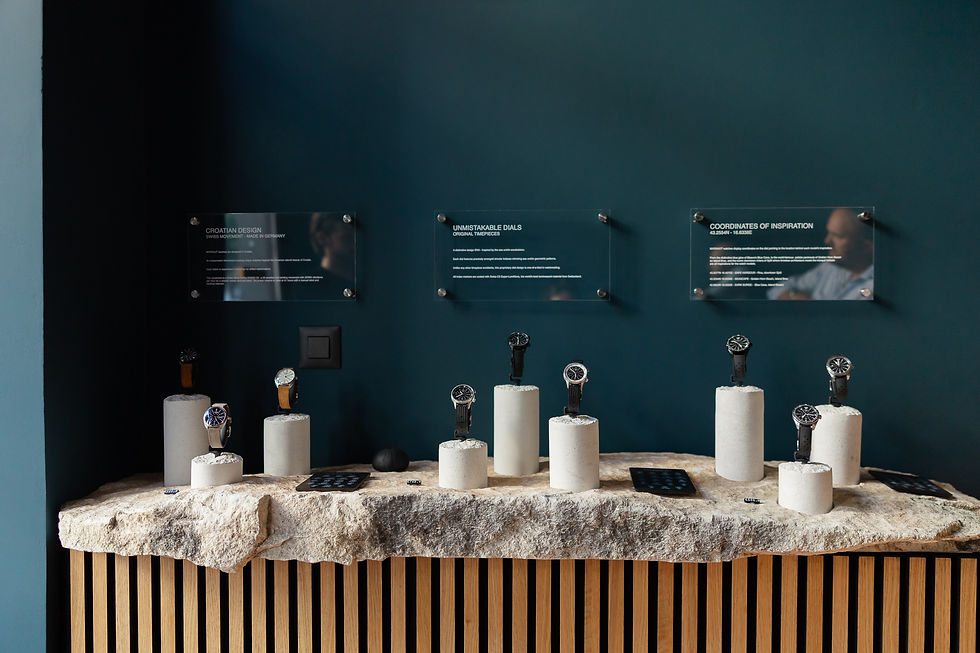
Firstly, Mario's design process is deeply personal. Drawing from his own childhood memories of diving for sea urchins, he translated the symmetry of their exoskeletons into the brand's signature dials. He also insists on originality.
“I made two rules: no deadlines, and don't go to market unless it's original.” - Mario Jutronić

The journey started in 2018., after years as a Creative Director in Hong Kong, Mario returned to Croatia, carrying years of passion, knowledge, and vintage watch collecting experience. This exposure to different places, behaviours, and cultures has inspired him to create his own watch brand.
His fascination with watches started early. At just twelve years old, while living in Japan, he received a Seiko for his birthday from his parents. Even at that age he remembers being charged with a feeling of “this is my timepiece.” That gift planted the seed.
Over the years, his collection grew, primarily vintage dive watches from the 50s, 60s, and 70s. He became amazed with the subtle distinctions among pieces, and this passion combined with his international experience and creative background, formed the blueprint for Marnaut.
Unlike brands built around marketing hype, Marnaut grew from a clear design ethos. The name itself is a deliberate choice: “Mar” for sea, “naut” for explorer. Not, as some might guess, a play on the founder's own name.

Growing up between Brač and Japan, how did those two contrasting yet profound cultures shape your personal aesthetic and values as a watchmaker?
Mario Jutronić: It's hard to grasp the meaning of moving to such a wildly different, amazing country as a child but later in life that puzzle starts to piece together and especially since my family always came back to Croatia over the summer holidays so I could continuously contrast.
“I was lucky to experience that Croatian childhood of swimming in the beautiful Adriatic everyday, the feeling of the sea salt drying on your warm skin in the sun, football with friends before the sun goes down, riding bikes around town and just that magic that is the Croatian summer.” - Mario Jutronić
For some odd reason even when I was very young I believed that the fact that I am and have lived all over the world will be a bit of a super power, that one day this privilege will be a part of my success. Now looking back I can maybe describe the culmination of me creating my own watch brand as; Japan introduced me to time, the United States taught me that anything is possible, Hong Kong honed my professional skills to develop it, and Croatia is and always was the muse.

One of the brand’s most iconic elements is the sea urchin dial, inspired by the memory.
“I’d line up sea urchin exoskeletons and pick the most symmetrical ones. They felt like something alien, geometric, delicate, and beautiful.” - Mario Jutronić

This visual became Marnaut’s design backbone. And in his eyes, urchins symbolize cleanliness and resilience. They’re filters cleaning the sea. When you see them, you know the water’s clean. Unless you step on one, of course.
Are dive watches exclusively for divers and sea sports enthusiasts in your opinion, and do you find that this perception poses any challenges for your brand?
Mario Jutronić: I would say dive watches have long entered into their own realm of design outside of actually diving. I believe it is the number one selling design style in watches and I do not know of people who dive with Rolexes or Blancpains. I see it as more of a connection to the past when these were tools people relied on and now that design aesthetic has seeped into the mainstay of watch design. I think of watches as jewellery for men and dive watches, at least to me, have the appeal that the person wearing it is cool and multifaceted.

What types of watches does Marnaut currently offer, and what makes each model unique or special in terms of design and functionality?
Mario Jutronić: The first watch we put out and the timeless diver watch staple was our Dark Surge 300. We developed a custom case with subtle bends on the side and lugs matched with our one-of-a-kind dial. We have managed to put an original offering to the most flooded watch space - the dive watch market segment. It features a 120 click ceramic bezel, 300m of water resistance and a robust SW 200 Sellita movement.

The Seascape 200 was our next model in the lineup. I loved and collected the supercompressor style watches from the 1960’s and this is inspired by them. What makes them unique is that they have not one but two crowns. The sight of two crowns on the wrist is a unique visual marker, the upper bezel turns the bezel under the glass and the bottom one adjusts the time. They used to call these watches “the gentleman’s diver” as it was one step towards a dress watch with its round case but is a diver.

Our third model was the Safe Harbour 100 is a dress watch but a tool dress watch with 100m of water resistance. Having collected vintage Grand Seikos from the 1960s and 1970s - they had unbelievable cases, I still think they are some of the best watch cases ever made. I took inspiration from a 36mm GS case and made it larger to 39mm while opening up the glass further to the edges. Our DNA of the dotted indexed dial fits seamlessly into the elegant case.

Each Marnaut watch comes with a leather pouch for transport and an additional strap. It' s a simple item but nice to have for when you want to throw in your pack while travelling.

How long does it typically take to go from the initial idea on paper to the finished watch?
Mario Jutronić: Putting the conceptual idea aside as that can take years sometimes, pushing through a design to the molding and prototype stages takes three to five months. Then if there are no revisions I think it's my experience that 4 months later the timepieces can be ready for market. So all in all it can be nine to ten months.

In a world full of hommage designs and derivative styles, Marnaut stands out for its originality. Their secret? Balance of both. Mario looks at the project as a long term operation where he wants to establish a heritage brand with heritage designs. Rolex, Omega or Blancpain all have heritage designs that are (in his view) their best selling designs. He wants Marnaut to be long term focused, for a whole other generation.
Has the transition from the Japanese Miyota movement to the Swiss Sellita impacted the performance and reliability of your watches?
Mario Jutronić: I have to say that Miyota, especially their 9015 movements are good movements and respected in the industry, however, when I made the decision to move back to Croatia I re-grouped and wanted to position Marnaut watches as more of a European offering. I started using the Swiss Sellita SW 200 which is a fantastic workhorse movement. I am proud to get to the point where I can say:
“The watches are Designed in Croatia, have Swiss movements, and are Made in Germany.” - Mario Jutronić
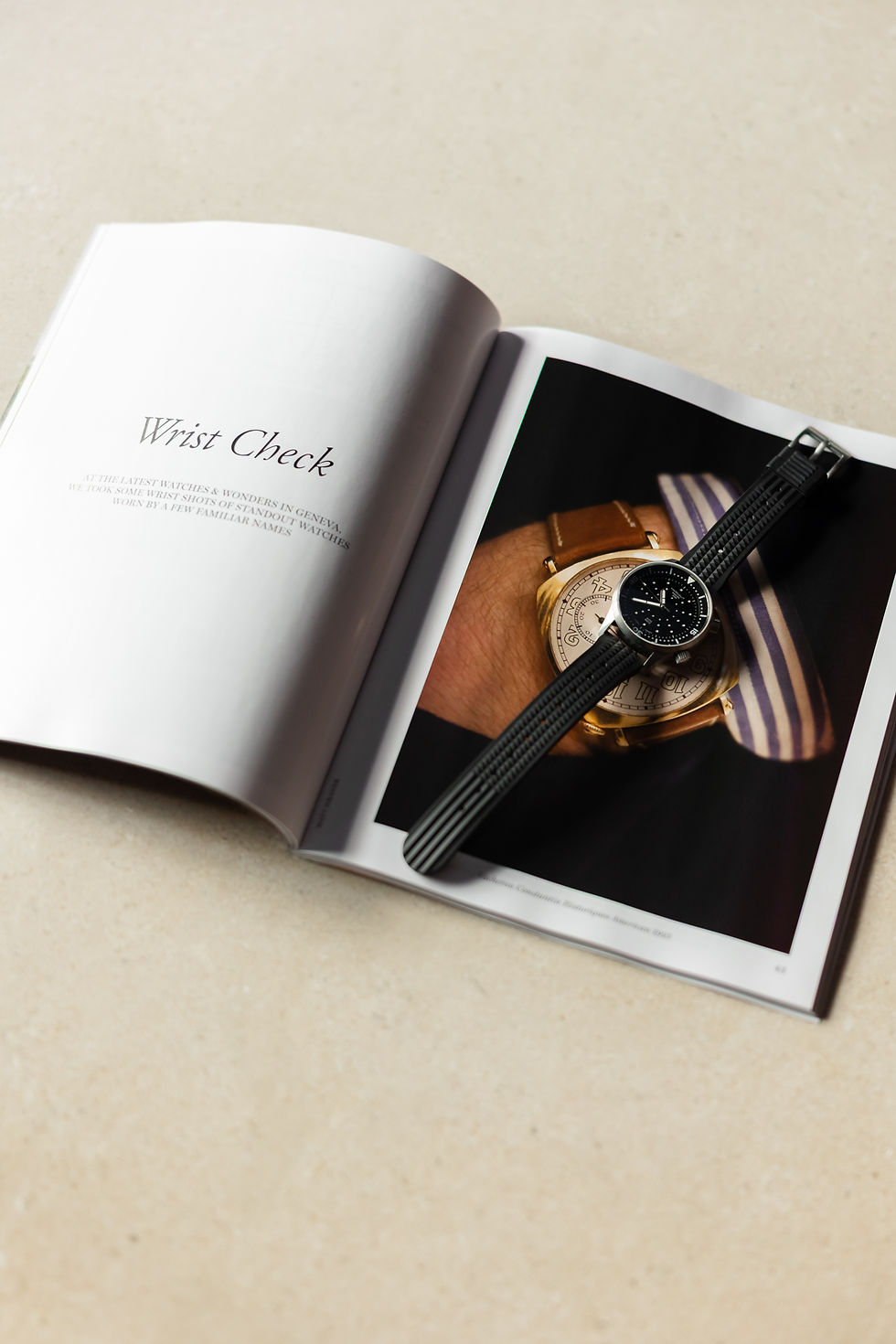
Each model references a specific Croatian location from Split to the Blue Cave. The first watch was inspired by a boat trip from Sutivan around Vis and then Biševo’s blue cave, it was an adventure Mario will never forget. The Seascape is a nod to Bol, which is probably Croatia’s most beautiful and iconic seascape. Finally the Safe Harbour pays tribute to the beautiful port city of Split, Mario's birth place.
It's no secret that a lot of people fall in love with Croatia while visiting and Marnaut can be that connection with their trip long after they are gone, says Mario. A nice bottle of wine and olive oil is great but a Marnaut watch is something that can literally stay with the person for generations and that’s pretty special. It's important to note that Mario is nurturing the brand to be a quality mainstay brand in the watch industry. People can wear it proudly because of the quality and originality factor and the additional connection with Croatia, he sees that as a bonus.

Do you have a personal watch collection beyond Marnaut? Are there any vintage pieces or brands that you admire?
Mario Jutronić: I have to say Seiko. I think it is because of my Japan connection, but they have such quality for the price points, such a rich history of designs that I think it is a perfect starting point for anyone wanting to get into vintage watch exploration or collecting. I do not know if they still do but they used to make their own in-house oils for their movements, they also used to be on par and more expensive than Rolexes in the 60’s and 70’s. Seiko put out one the first automatic chronograph watches pretty much the same time as the El Primero came out. Then you get into the Grand Seiko's they used to make only for their domestic market, watches with such elegance, beauty and powerful simplicity in design.
A few of my favorites was the Silver wave J12082 which was their first ever diver style watch, I believe it first came out in 1962. It featured for the first time the Seiko wave design stamped on the back of the case and had an inner rotating bezel. They made a few of those with a sunburst dial option, just superb, I had a good number of them. The other one is one of their famous classics and one I still own, the 6105-8110 Captain Willard which was worn in the movie Apocalypse Now. The asymmetrical cushion case was such a departure from anything that was on the market, it offers such visual uniqueness with the coolness of a proper vintage diver with heritage, one of my favorite watches ever made.
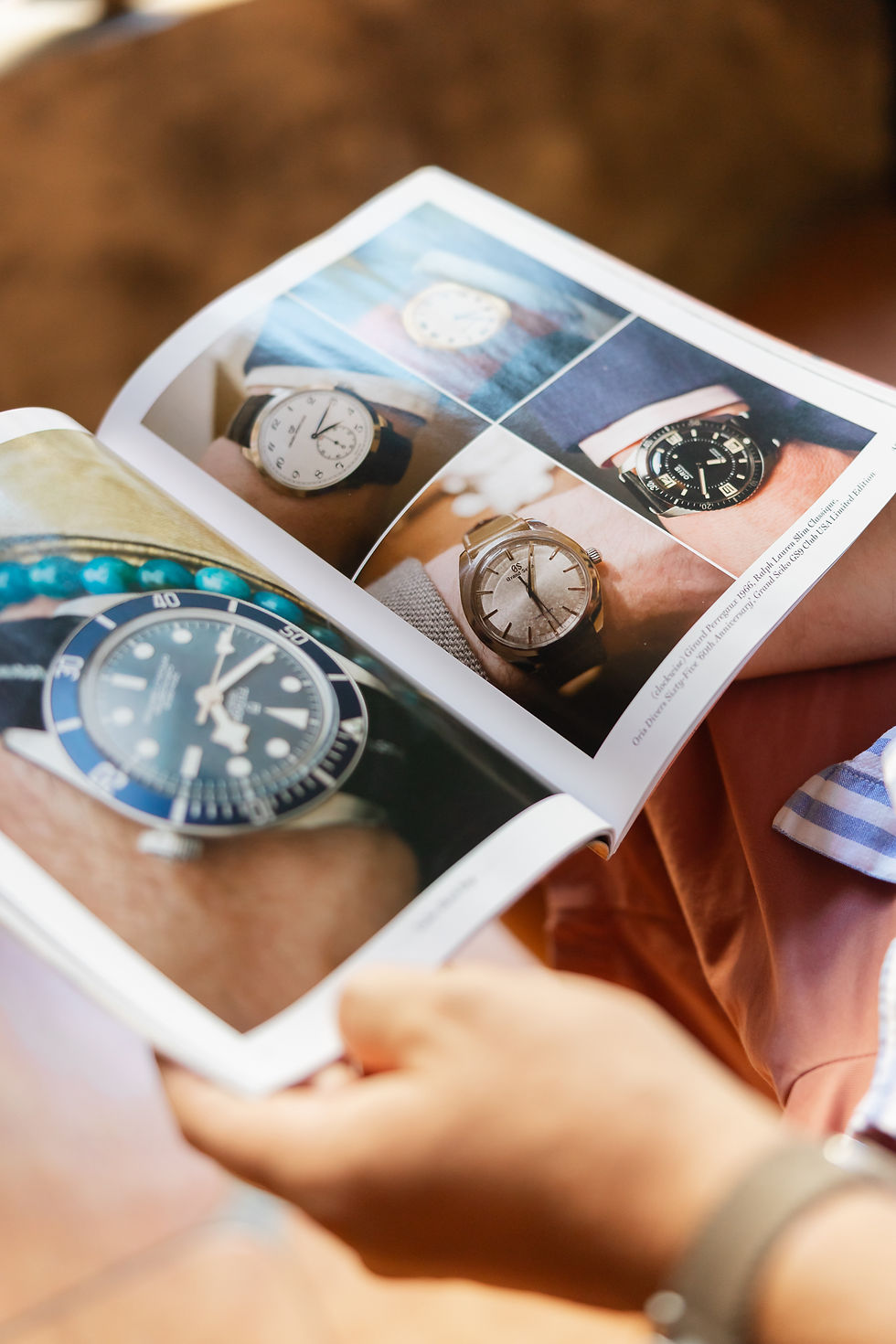
Many microbrands remain digital-only, but you opened showrooms in both Split and Zagreb. What’s the value in creating a physical space for such a tactile product and how do customers respond to it?
Mario Jutronić: You are right, it is a big step for the brand and a bit of an unorthodox approach as well. I feel like this risk of opening my own showroom in Zagreb was based on the foundation that a move like that will bring some awareness to the brand itself and that has its own inherent value. As of now it is just a showroom where we take appointments and walk-ins but we have hopes in the future to run it as a proper shop. The Split showroom was more of an opportunity that was recently presented to me, it is not a space that Marnaut rents but rather through a partner called Smartspace. They have been extremely generous in providing us with a prime place for a showcase and have taken a bit of that burden away from us. I believe they saw the added value an interesting brand like Marnaut can bring to their space and I am grateful for the opportunity.
One other aspect that I feel is worth mentioning is the fact that these showrooms, from our first one in Supetar to Zagreb, and now Split is a chance for us to showcase the watches in the way that we want them to be seen. I treat each location as a blank canvas that we fill with Brački kamen, the famous lime stone from my island of Brač. Each space is tailored with unique and custom display pieces and tables I design out of the Brač stone. This added visual identity I feel is important to how Marnaut is showcased as it is another way that the brand represents its Croatian heritage.


What’s next for Marnaut? Are there new complications, collaborations, or categories that we can expect soon, or is your mission to simply make the “perfect” dive watch?
Mario Jutronić: Yes, we are going to be putting out a GMT watch for pre-order in the late stages of this year. I hope to have another intriguing event with some prototypes on show in the fall, which will most probably take place in Zagreb. There is an exciting brand we are looking to partner and promote with especially in 2026 but I cannot divulge much more than that.
In terms of a perfect dive watch - we think that does not exist. The perfect watch is any watch that speaks to you personally. In terms of Marnaut, we are here to build a brand that will last generations.
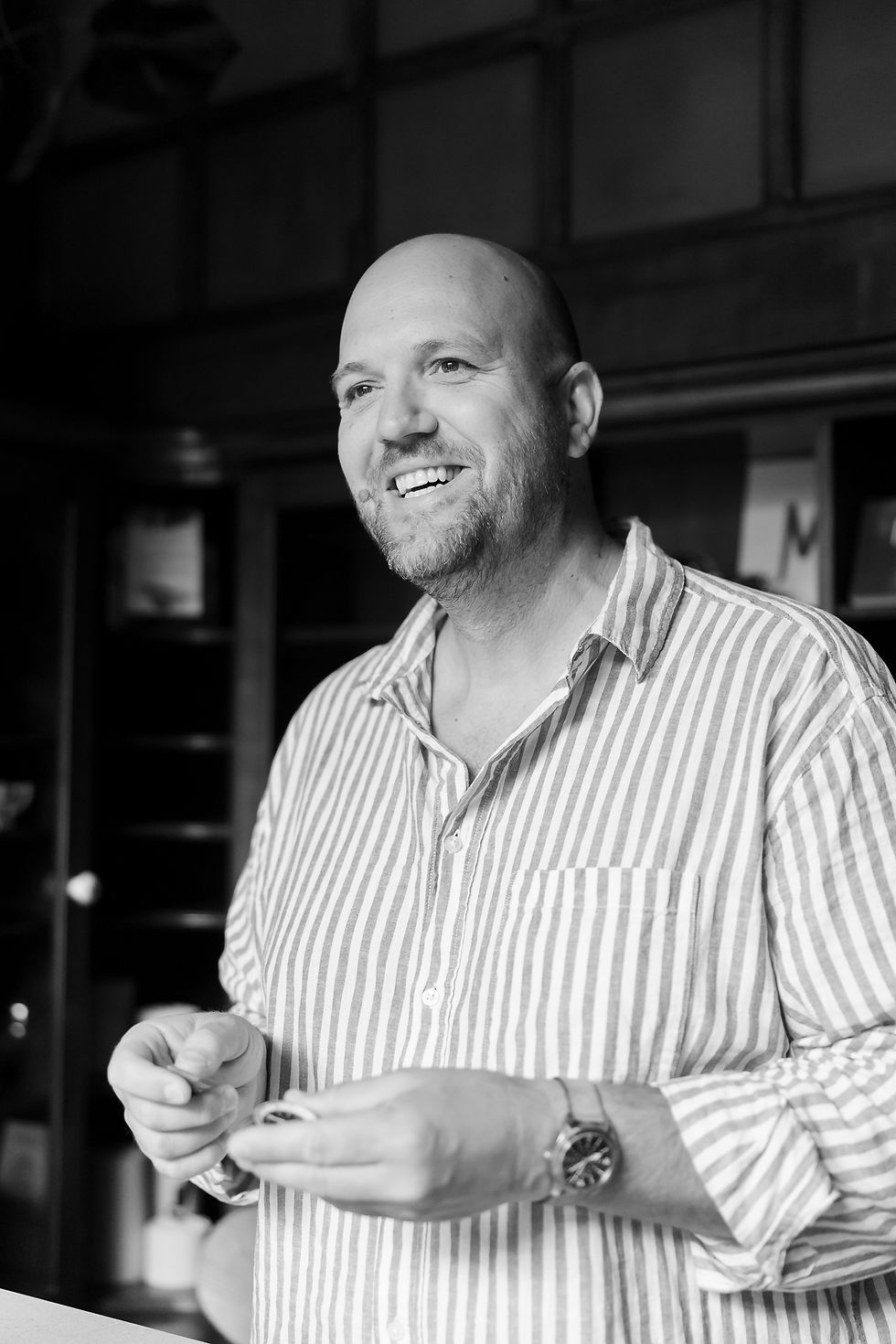
Marnaut’s story is deeply personal, proudly Croatian, and refreshingly original. In a sea of brands chasing trends, Mario Jutronić has created something enduring, inspired by heritage and shaped by instinct. We’re grateful for the opportunity to sit down with him, explore his world of design, and share the story behind these remarkable timepieces.
Pictures: Martina Movrić
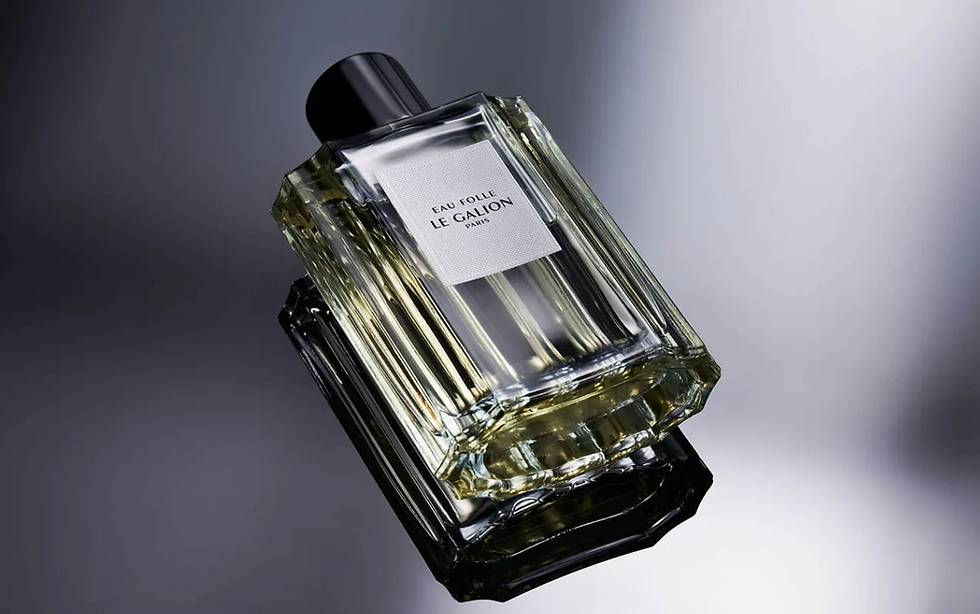


Comments